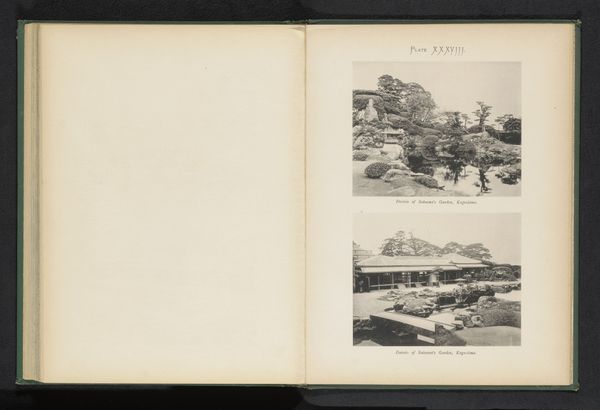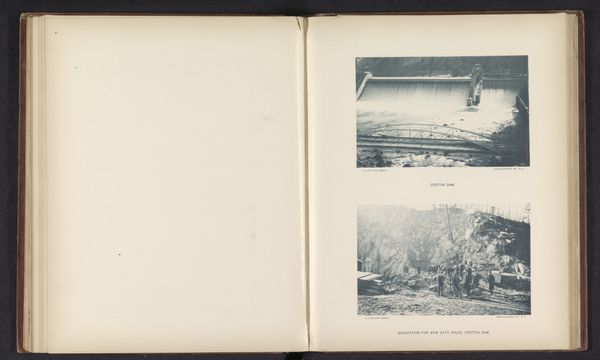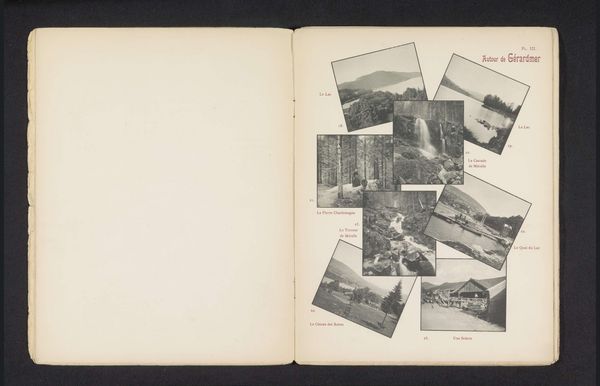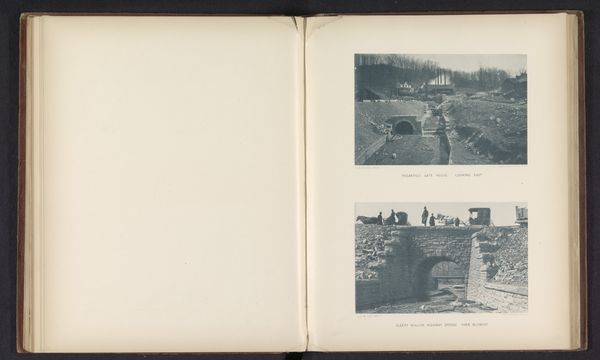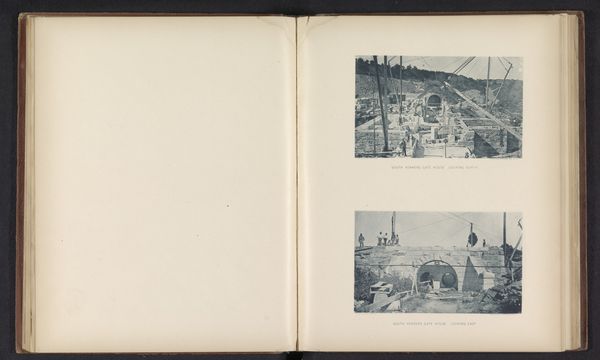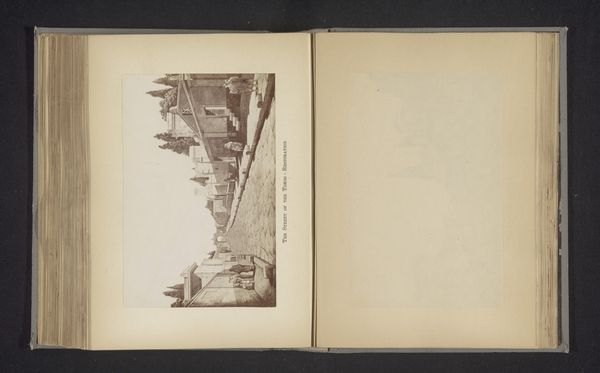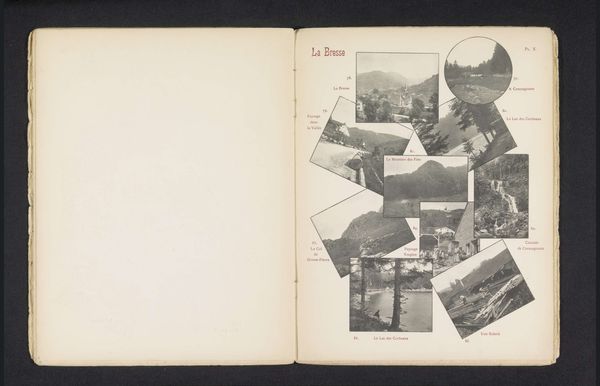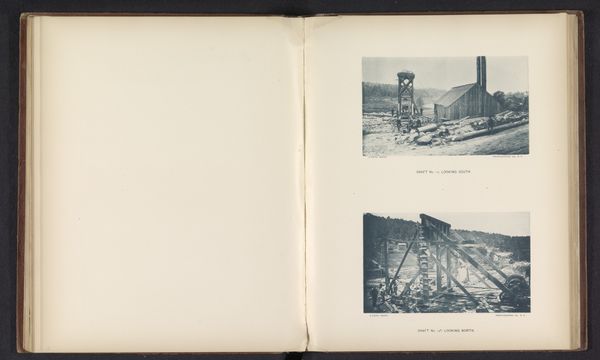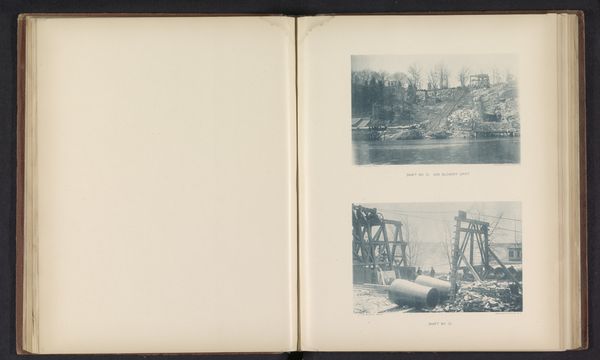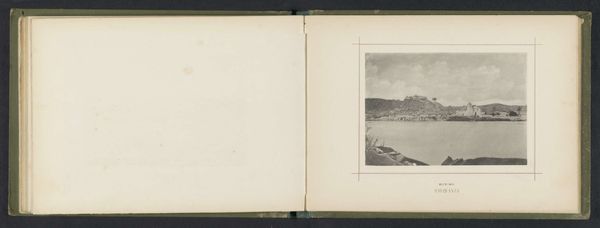![['Headhouse shaft No. 25', 'Curbing shaft no 25'] by C.V.V. Powers](/_next/image?url=https%3A%2F%2Fd2w8kbdekdi1gv.cloudfront.net%2FeyJidWNrZXQiOiAiYXJ0ZXJhLWltYWdlcy1idWNrZXQiLCAia2V5IjogImFydHdvcmtzLzk3NDRlMjkyLTZkMTYtNGZkNC04OWYwLTQ3YWQxNGMyM2NlNC85NzQ0ZTI5Mi02ZDE2LTRmZDQtODlmMC00N2FkMTRjMjNjZTRfZnVsbC5qcGciLCAiZWRpdHMiOiB7InJlc2l6ZSI6IHsid2lkdGgiOiAxOTIwLCAiaGVpZ2h0IjogMTkyMCwgImZpdCI6ICJpbnNpZGUifX19&w=3840&q=75)
print, photography, site-specific, albumen-print
#
aged paper
#
toned paper
#
homemade paper
#
ink paper printed
# print
#
landscape
#
paper texture
#
photography
#
hand-drawn typeface
#
site-specific
#
pen and pencil
#
thick font
#
cityscape
#
history-painting
#
golden font
#
albumen-print
#
realism
#
historical font
Dimensions: height 345 mm, width 272 mm
Copyright: Rijks Museum: Open Domain
Curator: Here we have an intriguing page displaying two albumen prints attributed to C.V.V. Powers, dating from before 1887. They are titled "Headhouse Shaft No. 25" and "Curbing Shaft No. 25.” Editor: Stark and somehow monumental. There’s a haunting quality, even though it's documenting, presumably, industrial progress. The contrast between the pale sky and the dark structures below creates a very specific mood. Curator: Indeed. Note the precise geometry of the headhouse, its stark angles cutting into the sky. Then observe the curbing shaft—the carefully constructed timber frame almost looks like the exposed ribs of some industrial beast. These are potent studies in form, function, and materiality. Editor: Absolutely. And that beast, you see, is the burgeoning industry of that era, with each beam and structure a symbol of man's domination over the earth. Notice also how the workers clustered around seem small and almost insignificant against those colossal machines. They serve as reminders of the human cost. Curator: Consider the composition. In both images, the artist uses a low vantage point, accentuating the verticality of the structures. This bold compositional choice invites us to contemplate their monumentality within the landscape. Also notice the hand-drawn typeface identifying each construction. Editor: And the placement of the type reinforces this. It frames the scenes in a certain way, adding to their significance. Also the workers' positioning within the photographs—always near or on the structures—almost suggests they are ritualistically bound to their operation, participants in progress who perhaps did not benefit equally. Curator: What strikes me most is the technical proficiency in capturing these scenes with such clarity using albumen prints, especially considering the cumbersome process. It is an important documentation of industrial transformation of this area before 1887. Editor: Reflecting on Powers’ “Headhouse Shaft No. 25” and "Curbing Shaft No. 25," I'm left contemplating the human story etched into these images. These photographs have lasting relevance to modern anxieties. Curator: For me, the compelling feature remains the formal juxtaposition between organic forms such as the piles of unearthed stone with rigid geometries in built constructions which speak volumes. They echo formal paradoxes, not merely images of fact but reflections on progress, design, and human intention.
Comments
No comments
Be the first to comment and join the conversation on the ultimate creative platform.
